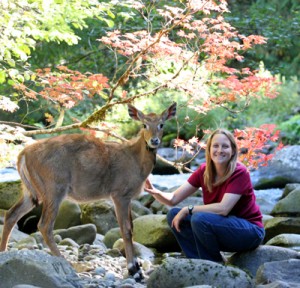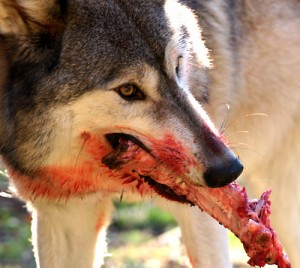 A vegan seeks to avoid all use of animals for food, clothing, or any other purpose. But if you tell people that you are a vegan, they will often infer rather more. Some will hear “touchy-feely-hippy-freak,” some will hear “human-hating-animal-lover,” and some will hear “animal-hating-Animal-Rights-zealot.” For a word coined less than 70 years ago, “vegan” carries a great deal of emotional baggage.
A vegan seeks to avoid all use of animals for food, clothing, or any other purpose. But if you tell people that you are a vegan, they will often infer rather more. Some will hear “touchy-feely-hippy-freak,” some will hear “human-hating-animal-lover,” and some will hear “animal-hating-Animal-Rights-zealot.” For a word coined less than 70 years ago, “vegan” carries a great deal of emotional baggage.
Some of my best friends are vegan, as was I for many years. There are many compelling reasons to be vegan , including nutritional or religious beliefs and culinary preference. However, many vegans are motivated by the desire to do what is best for animals. Let’s examine the reasoning behind such “ethical veganism”:
Animals have the right not to be eaten:
This is a direct quote from one of the most respected legal scholars in the field. Seriously. Setting aside the matter of “rights” for a moment, let’s acknowledge inescapable reality: in nature, every animal dies and is eaten. All life depends upon death. If you truly love and respect Nature, you cannot reject its most central process. Not only is being eaten a virtual certainty for every animal, this vital biological mechanism provides food for every living animal: billions of animals make it through each day by eating the bodies of those who died the day before. Even when not ripped apart by a predator, animals are eventually consumed by small organisms that are then consumed by larger organisms. This is the cycle of life: you may celebrate this truth or lament it, but you cannot change it. If you could enforce the notion that no animals be eaten, in a few swift weeks life on Earth would cease.
Animals have the right to a life without suffering:
So absurd is this argument that it is astonishing that anyone might accept the assertion, yet it is the bedrock quicksand of the animal rights movement in general and PETA in particular:
- In the natural world, animals possess no rights, no protections, no guarantees. Rights are a human construct, conferred by society or god: this abstraction has nothing to do with nature.
- Even if we were to extend the general concept of rights to animals, one we could not grant would be “the right to life free from suffering.” No animal in the wild is free from suffering, nor is any human. A life free from suffering is not a right, but a fantasy.
- Life in nature is a struggle full of suffering – cold, heat, hunger, thirst, parasites, injury, illness, predation, conflict. Leave the confinement of your house and go live in the wild for a few months, then decide whether you prefer the “freedom” of the wild or the comforts of your home.
- If we pretend that a life without suffering were a reasonable goal, there is only one way to imagine achieving it: capture all the animals in the wild and bring them into our world and devote ourselves to ensuring that their lives are as free from suffering as possible. The only animals, including humans, that come close to life free of suffering are the millions of pampered pets whose every need and desire are met by doting owners, with the help of groomers, veterinarians, chiropractors, nutritionists, and others.
Animals deserve to be free: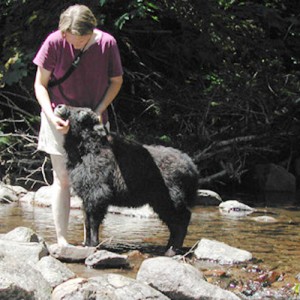
Very few animals are free: their movements are curtailed by other animals’ ranges, by geographic barriers, by predators. Freedom is a human illusion—we are all constrained. More important, anyone who has spent time around animals knows that, with few exceptions, animals do not want to travel: they want to establish a home range and stay there, safe and comfortable. If their range happens to be defined by fencing, and if within that range all their needs are met, animals do not yearn for some hypothetical freedom.
Animals deserve the longest possible life:
Life in nature is seldom long. Most wild animals die well before maturity, and few live long enough to see old age. If you believe that animals deserve the longest possible life, you cannot simultaneously believe that they should be in the wild: captive animals indisputably live considerably longer than wild animals.
Animals deserve a humane death:
Death in nature is rarely pleasant, never “humane.” Most animals in the wild die with little comfort. Whether they starve to death, are taken down by predators, succumb to illness, or meet one of numberless other fates, the end is often slow and agonizing. It may be comforting to imagine that predators kill with merciful speed, but anyone who has ever watched a cat play with a mouse, or seen footage of a killer whale flinging a seal into the air, a pack of wolves eviscerating a still standing ungulate, knows that natural deaths are often brutal. If you believe animals deserve a humane death, you cannot simultaneously believe they should be in the wild.
Humans are no better than animals and therefore should not eat them:
I am not sure this argument is valid—while we may not be better than animals, human consciousness is clearly different than that of most animals and might therefore obligate or entitle us to behave differently in certain situations. However, even if we accept the idea that humans are no different than animals, it would follow from this that we are not constrained to behave differently from the rest of nature, in which case we would be no more obligated to veganism than any other animal. Ethical vegans often suggest that meat-eating humans are misguidedly arrogant, that people who eat meat must believe they are superior to animals in order to ignore their suffering and consume them—that eating animals requires perceiving them as commodities. And many meat eaters fall into this logical trap, defending their right to eat meat by quoting scripture about man’s dominion or making arguments about our moral or intellectual superiority. However, these arguments are backwards. It is arrogant to imagine that we are so qualitatively different from the rest of nature that we should eschew its underlying truths. Do we really imagine ourselves so divine that we should remove ourselves from the very cycle of life? We eat, we are eaten. Our bodies are all commodities for animals yet to come.
Exploitation is wrong: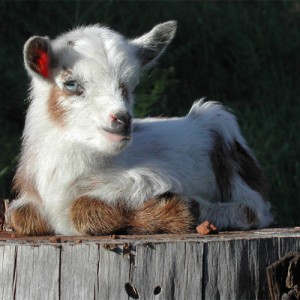
Even accepting this assertion, very few human:animal relationships are exploitive. On the contrary, they are mutualistic: both species experience an increase in quality of life and survivorship. In fact, many human relationships with pets are amusingly close to pure exploitation of the human: the animal derives virtually all of the benefits. Many humans take such good care of their animals that their charges’ life expectancies are two to three times greater than those in the wild; and their lives are not only more comfortable but pampered. Even many animals kept for food are exceptionally well cared for and live longer than an average wild lifespan. They are not exploited, they are well compensated .… (The vegan notion of exploitation is so broad that using the bones of a long dead animal is considered exploitation, keeping a sheep and providing her with a great home, protection from predators, food, veterinary care, fresh water, and anything else she wants, and in exchange taking her wool that would fall off anyway and will grow back is seen as exploitation.)
Animals “belong” in the wild:
Animals belong in the world. As the world has changed, so have animals. Whatever the wild was before mankind arrived, it exists no longer. Do not condemn the animals of the world to die as we inexorably alter the planet. Allow them to evolve and to become a part of our new world: it is their only option, and is also full of luxuries and benefits: plentiful food, medicine, warmth, pillows…
Species we eat are “worse off” than species we do not:
Not so. Species that we use for food or other practical purposes fare far better than species providing no tangible value to mankind. While a few exceptional species – mostly scavengers like rats and roaches – have thrived alongside mankind, in general as our numbers have increased, the populations of other animals have declined, many of them to the point of extinction. It is predicted that half of the mammal species on the planet today will be extinct in fifty years. On the other hand, species that have tangible value to mankind have flourished: dogs, cats, horses, chickens, cows, pigs, etc. Unquestionably some individuals of these species have bad lives, but the species have flourished, and many of the individuals have had great lives. (As an interesting side note, one could argue that species kept by humans are injured genetically: they lose certain abilities over time, such as chickens that can no longer fly. However, this argument essentially demonstrates that captive lives are easier than wild lives: in captivity, species become less fit because human caretakers free them from the environmental pressures that normally keep them from devolving, just as humans have become largely incapable of surviving in the wild, having adapted during generations of civilization’s comparative ease.
 Individuals we keep to eat are worse off than those we do not:
Individuals we keep to eat are worse off than those we do not:
Sometimes this is true, often not. In aggregate, we cannot know. Consider my chicken Sasha as an example. Of course she would never have been born if we did not keep chickens, but even if she had, she would have likely been eaten in her first few weeks by a predator, or starved to death her first winter. Had she survived long enough, she would have been cold, hungry, wet, and miserable, until she reached her maximal life expectancy in the wild a few years later and died, likely eaten while still alive by a weasel, hawk, or bobcat. Because I eat eggs, or more accurately I feed most of them to my other animals, she has spent 10 years in a perfect yard, protected from all predators, with a warm room for winter, healthy food and vitamin supplements, with all the room she wants, dirt to scratch in, bugs to eat, other chickens for companionship, rocks to keep her nails trimmed, a disco ball making lights on the ground to chase, virtually no parasites, veterinary care if needed, shade and mist on hot days, etc. Even if I had eaten her years ago, she would have had a longer life, and a life far more full of happiness and free of suffering, than she would possibly have had without a human caretaker.
Not eating meat will have a practical impact on the meat production industry:
I believe this is the most interesting and compelling argument – both in favor of veganism and against. The basic argument is: regardless of all the theoretical and philosophical rhetoric above, we have seen what happens when humans raise animals for food, and it is not pretty. We have seen over and over in many different industries that when there is profit involved, some people will sacrifice the welfare of their employees and their animals in order to maximize gain. Perhaps humans will someday evolve their thinking so that greed motivates good behavior because people recognize that being happy is more valuable than being wealthy and that the path to happiness lies through good behavior rather than profit, but for now, we need practical solutions.
In the real world, we must devise ways to prevent greed from driving bad behaviors. This is true in every animal venture where profit is involved: breeding, racing, ranching, pet stores, and the rest. The behaviors driven by profit are generally inconsistent with the best interests of the animals, and we need to find ways to prevent greed from motivating abuse or neglect. Historically, two tools have been effective: legal mandates for minimal care and consumer demand for improved processes.
Legal mandates on minimal care similar to minimum wage, child labor laws, and nursing home standards, for example, are likely essential to prevent the worst cases of outright abuse, and such abuse and neglect laws already exist in most states, and of course, depend upon effective enforcement.
Possibly the most effective tool we have to influence how captive animals are cared for is how we consumers allocate our dollars. Dolphin-safe tuna, conflict-free diamonds, organic foods: it is clear that if consumers demand and are willing to pay for a process improvement, suppliers will meet that demand. Let us imagine that everyone became vegan tomorrow: millions of animals would be immediately “unemployed” – and soon killed or turned loose into the wild where they would suffer and die; and billions of animals would never be born in the future. On the other hand, if instead of becoming vegan, everyone tomorrow demanded humane treatment for animals in captivity, and only purchased humanely raised meat, suddenly raising meat humanely would be profitable, and raising meat inhumanely would become competitively unprofitable. Billions of animals would enjoy pleasant lives before eventually being eaten, the ideal life for any animal. Such decisions would yield a far more realistic outcome: many more people would pay extra for humanely raised products than would renounce meat altogether. And as the human population increases and we need more and more food, animal consumption is likely to increase, not decrease.
Eat meat, do not eat meat. It matters not to the animals of the world. They do not care whether they are eaten by you or some other animal, although you are hopefully persuaded by the arguments above that eating meat is neither immoral nor necessarily harmful to animals.
But strict ethical veganism goes much further than not eating meat: its partisans argue that it is ethically essential to exclude all usage of animals for food, clothing, entertainment, companionship, or any other purpose. This means no beloved pets, no captive breeding programs of endangered species, no wool sweaters. “Better dead than caged,” they say. “The world is our cage,” I say, “let us enjoy it together, happily coexisting on farms, in living rooms, or even in comfortable enclosures.”
Animals today face a threat far graver than being eaten. Their historic habitats are being destroyed while misguided animal lovers work tirelessly to eradicate every viable alternative existence for animals in the 21st century, relegating them to survive only in an imaginary realm where they are blissfully free, never die, have no interaction with humans, and are never eaten. Do not protect their illusory rights by sacrificing their comfort, their safety, their very survival.
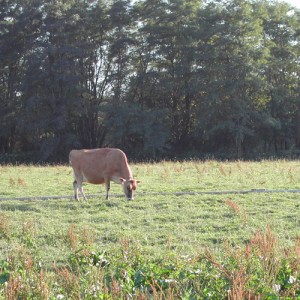

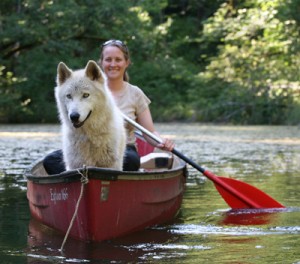 animal rights organizations have relentlessly asserted that, “Animals belong in the wild; nature is beautiful, peaceful, and good; captivity is bad; if you love animals, leave them alone; animals are happier in the wild than in captivity; animals need freedom to be happy; if an animal ‘must’ be in captivity, the highest goal is to recreate a wild life as faithfully as possible.”
animal rights organizations have relentlessly asserted that, “Animals belong in the wild; nature is beautiful, peaceful, and good; captivity is bad; if you love animals, leave them alone; animals are happier in the wild than in captivity; animals need freedom to be happy; if an animal ‘must’ be in captivity, the highest goal is to recreate a wild life as faithfully as possible.”
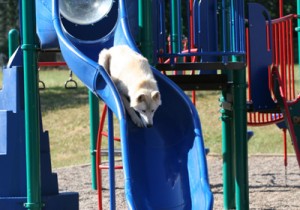
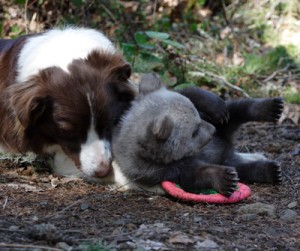
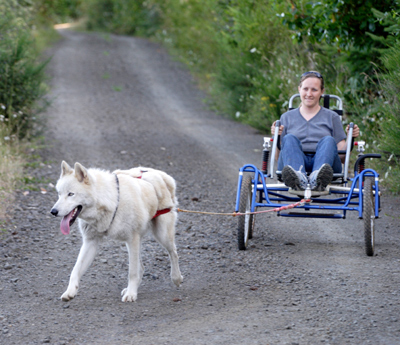
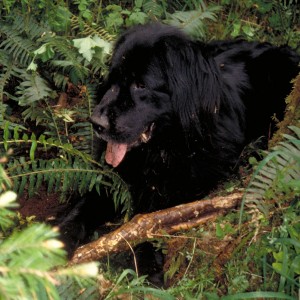
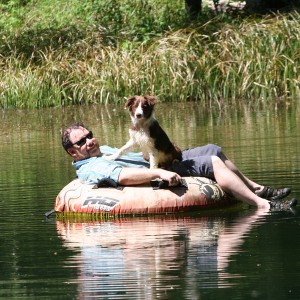 to train a dog to walk at your left side, the elegance lies in training a dog to do so with enthusiasm and joy.
to train a dog to walk at your left side, the elegance lies in training a dog to do so with enthusiasm and joy.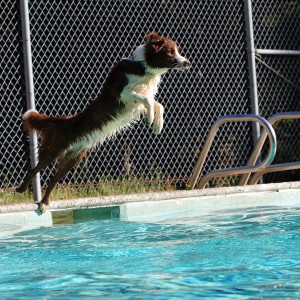
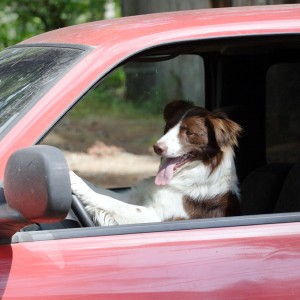
 m, and generally being the center of attention was a perfect day for Loki, so of course we went… Every few hours Loki would go into his crate for a quick nap. He loved this also—for a border collie, Loki was quite lazy, and a good nap was among his favorite things. One day I was sitting there next to Loki’s crate when a woman came running up calling me a heartless bastard. I looked around to see what she meant, and after a moment realized she was talking about Loki, lying there on a soft bed in a crate trying to sleep but somewhat disturbed by her yelling… I reached down and opened the crate door. I thought it was a grand gesture that conveyed everything I was thinking. She got even angrier and told me that I had broken his spirit and he was too afraid to come out of the cage. So I called him out and he cheerily did a few tricks; I tossed the Frisbee for him a few times, gave him the last bite of my ice cream (hey, it was the Fair!), kissed him on the head, and sent him back into his crate to finish his nap…
m, and generally being the center of attention was a perfect day for Loki, so of course we went… Every few hours Loki would go into his crate for a quick nap. He loved this also—for a border collie, Loki was quite lazy, and a good nap was among his favorite things. One day I was sitting there next to Loki’s crate when a woman came running up calling me a heartless bastard. I looked around to see what she meant, and after a moment realized she was talking about Loki, lying there on a soft bed in a crate trying to sleep but somewhat disturbed by her yelling… I reached down and opened the crate door. I thought it was a grand gesture that conveyed everything I was thinking. She got even angrier and told me that I had broken his spirit and he was too afraid to come out of the cage. So I called him out and he cheerily did a few tricks; I tossed the Frisbee for him a few times, gave him the last bite of my ice cream (hey, it was the Fair!), kissed him on the head, and sent him back into his crate to finish his nap…